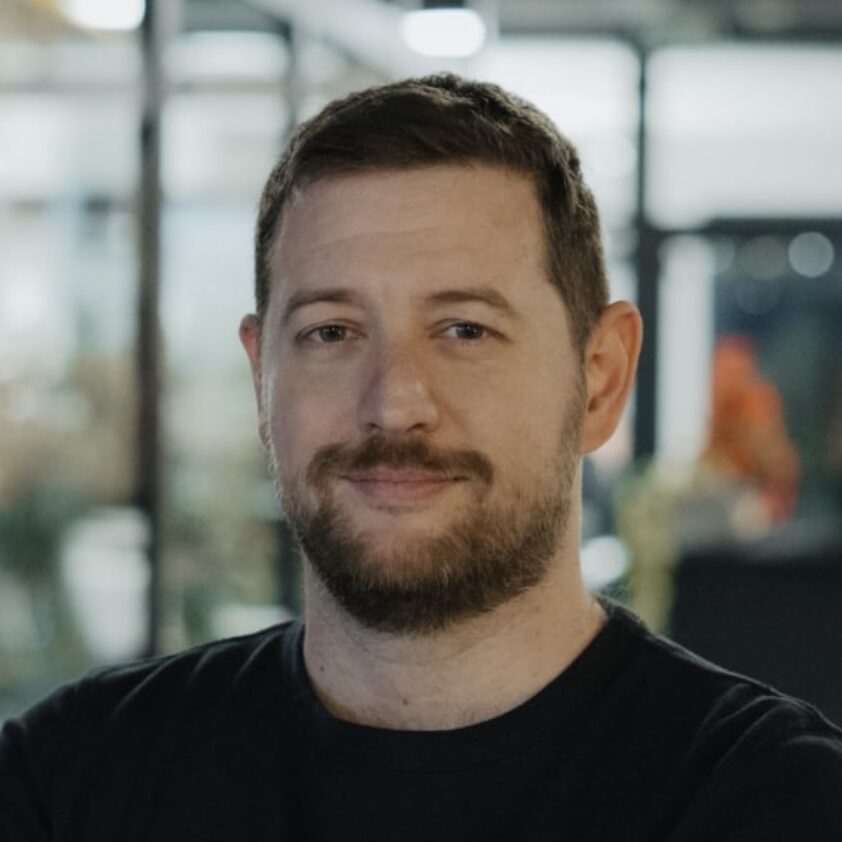October 28, 2025 - 5 min
Finding the Right Fit: How to Fill Hard-to-Hire Roles

Finding the right fit for a key role isn’t always straightforward — especially when the role itself doesn’t fit any standard definition. This is the story of how we searched, evaluated, and finally found the perfect Manager of Frontend Excellence for Q’s Center of Excellence — and why patience and clarity pay off.
Building a Company That Thinks Beyond Delivery
At Q, we’ve always aimed to be more than just another development agency — our goal is to be a true technical partner to every client.
The old model — agree on scope, build a team, deliver, and hand over — simply doesn’t fit the realities of modern projects anymore.
We believe in long-term partnerships built on trust, open communication, and shared goals. That means carefully choosing the right clients and projects — ones where we know we’re the right fit and can deliver lasting value.
When Client Expectations Drive Internal Evolution
So, as our projects grew more complex, our clients began expecting more from us — not just in delivery, but in leadership. They looked to us to help drive their technical direction.
Naturally, that level of partnership demands roles that go beyond standard job descriptions. And sometimes, our own internal growth requires us to bring in people who can shape how we operate as a company.
That’s one of the reasons we established our Centre of Excellence (CoE) — a dedicated department built to promote best practices, governance, and continuous improvement across all domains.
The department itself doesn’t bring value just by existing. The same rule that applies to any company applies here — the people are what make it valuable. In this case, those people are our CoE Managers. Assigning them internally came naturally for most domains, but one role stood out and proved to be the hardest to fill: Manager of Frontend Excellence.
A Role Without a Template
We started from scratch — defining the role from the ground up.
This wasn’t a standard frontend engineer or tech lead position. The person in this role would need to take horizontal ownership of the entire frontend ecosystem across the company.
Furthermore, they would need to establish governance, set standards, and drive improvement across multiple teams.
It was a role that would shape Q’s frontend future — and we couldn’t afford to get it wrong.
We needed someone with a strong mix of technical depth, leadership, and strategic vision — someone capable of integrating deeply into our ecosystem and helping it evolve.
Defining What ‘the Right Fit’ Means
We started by drafting a clear job description.
Some requirements were universal across all CoE Managers — a leadership mindset, commitment to best practices, and a passion for excellence.
But the frontend side had its specifics, and we needed to communicate them clearly. It was important to give each candidate an honest overview of the company and a transparent picture of what challenges awaited them.
We analyzed our tech stack, frameworks, libraries, and how our frontend developers collaborated with other teams. Then, we mapped out what our ideal candidate would look like:
- Deep expertise in at least one modern frontend framework
- Broad understanding of the frontend ecosystem
- Confidence in defining processes and standards
- The ability to connect technical decisions with business strategy
Exploring Every Avenue
To find the right fit, we took a three-track approach:
- Internal candidates – we encouraged our existing engineers with leadership potential to apply.
- Network outreach – we reached out to trusted professionals within our network.
- Public job posting – we opened the position on platforms like LinkedIn and our website.
Our internal search identified several strong candidates. We reviewed their past work, gathered feedback, and spoke with them directly. While we could have filled the position internally, we wanted to explore every possible path before making a decision.
Our network search brought us close, but many of the best candidates were already committed elsewhere. And we weren’t looking for someone motivated purely by compensation — we wanted someone excited about the opportunity to build something meaningful.
Finally, we opened the position publicly and waited to see who would rise from the pool.
Evaluating Candidates With Care
Once applications started coming in, we reviewed each one in detail.
Every CV, portfolio, public GitHub contribution, personal project, blog post, or conference talk was carefully examined to understand each candidate’s strengths and approach.
Our process had two main stages:
- First Interview. Led by the Talent team and myself (as the initial reviewer). This step assessed technical skills, leadership potential, and mindset. I had full autonomy to decide whether to move forward with a candidate or not.
- Second Interview. Conducted by our CoE Director, who approached each candidate from a strategic and business perspective, ensuring we had a well-rounded assessment from every angle.
After both rounds, we aligned internally and calibrated feedback before making any decisions.
It was a thorough, structured process that took time, but it ensured we were evaluating fairly and consistently.
When Everything Fell Into Place
We didn’t impose strict timelines on ourselves, even though this was a crucial role. Finding the right fit, a.k.a. the right person takes time.
In the meantime, I temporarily oversaw both backend and frontend domains, which gave me valuable insight into what we truly needed in a Frontend CoE Manager.
Then, one application stood out.
She had years of experience in a similar position and had spent a long time at her previous company — where she had built that role from scratch, rather than stepping into an existing structure.
In an industry where job-hopping was common (especially a few years ago), that kind of loyalty caught my attention. It was a sign that this person could handle the challenge and commit for the long run.
Her experience aligned perfectly with what we needed. From design system implementation and standardisation to a proactive, business-aware mindset. She was also studying business management, which made her an even stronger fit.
During the interview, everything just clicked. She was genuine, thoughtful, and confident. And everything on her CV checked out.
After our meeting, the Talent team and I looked at each other and said, “That’s it.”
The CoE Director’s interview confirmed what we already knew. We’d found our new Manager of Frontend Excellence.
The Final Piece of the Puzzle

Bringing her onboard was a turning point for our CoE.
It filled the last missing piece and allowed the department to thrive across all domains.
Looking back, the process reaffirmed one of our strongest beliefs:
Hiring for challenging roles takes time, patience, and clarity — but the results are always worth it.
We didn’t just hire a manager. We found a leader who embodies Q’s culture of excellence.
Someone who helps us push boundaries, raise standards, and build even stronger partnerships, both internally and externally.
And in this case, being a little “picky” truly paid off.
Key Takeaways
- Define before you search. A clear, well-thought-out role description saves time and avoids mismatched expectations later.
- Stay patient. The right candidate for a critical position may take time to find — rushing rarely pays off.
- Balance skills and mindset. Technical expertise matters, but leadership, communication, and strategic thinking make the real difference.
- Value alignment over urgency. When someone truly fits your company’s culture and vision, it’s worth the wait.
Let’s Build Something Great Together
Looking to strengthen your technical teams or elevate your product delivery?
Let’s talk. Our experts at Q can help you build, scale, and empower engineering excellence. From frontend and backend to complete digital ecosystems. We might be just the right fit for you.
Give Kudos by sharing the post!






